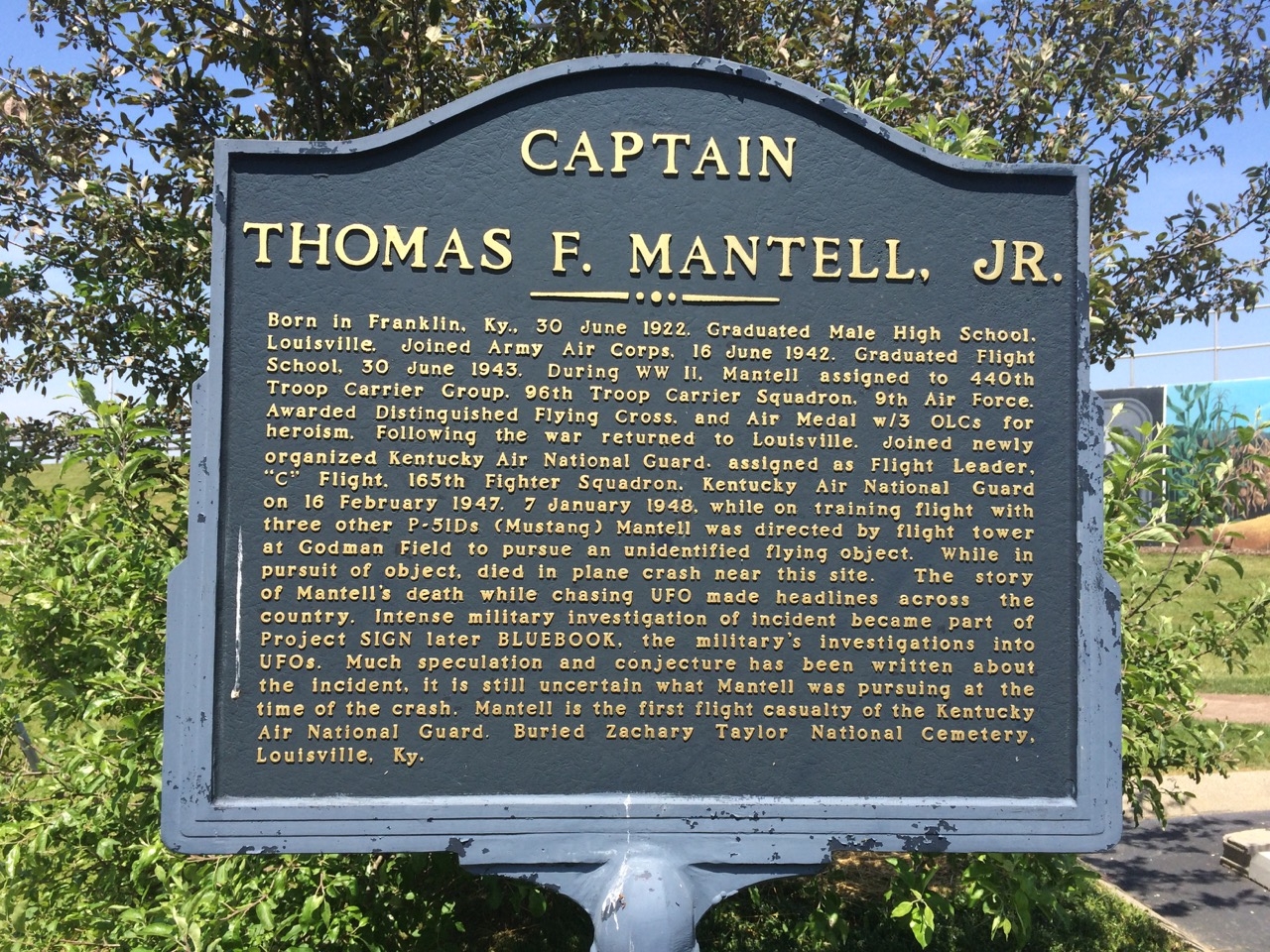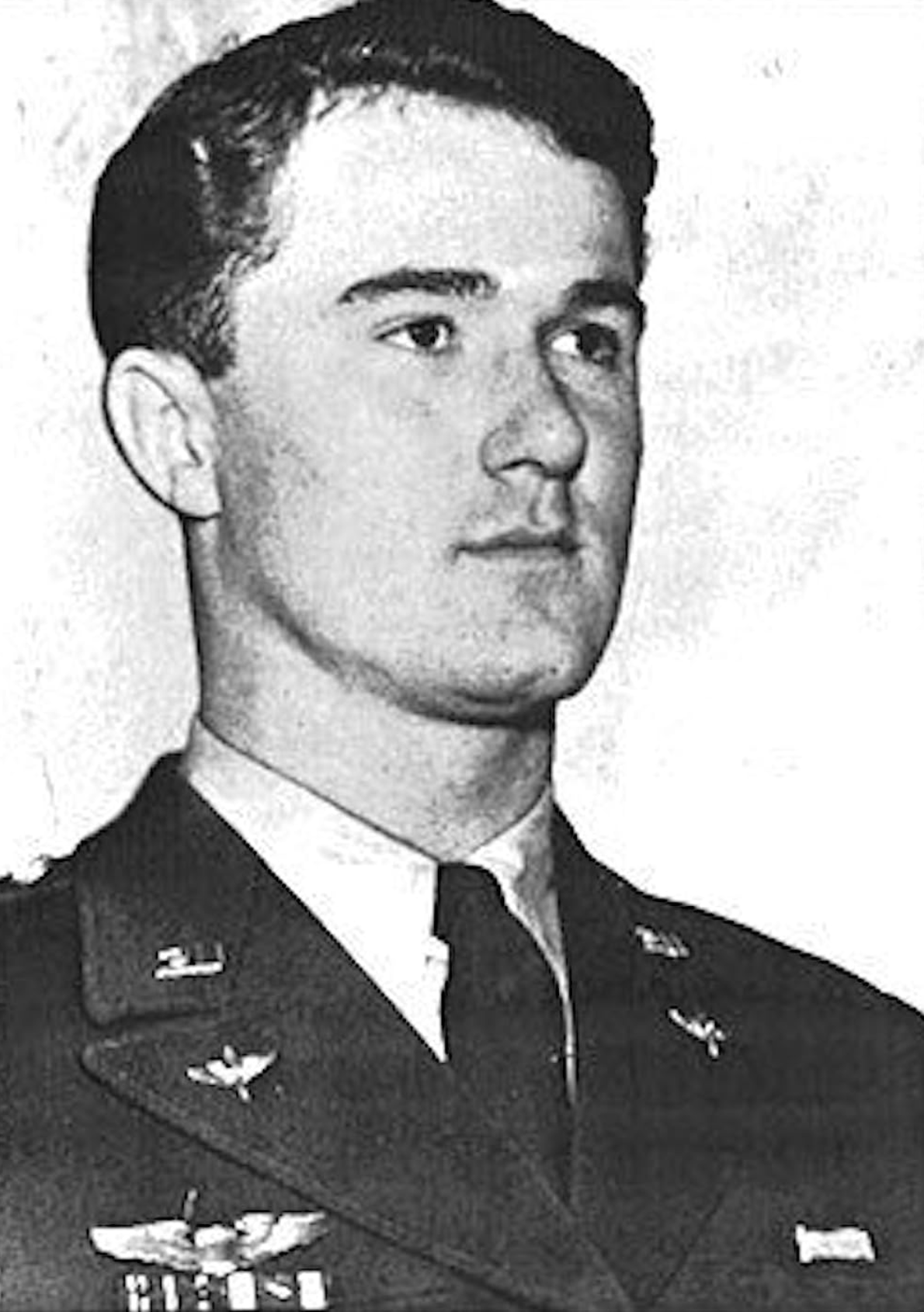
On 7 January 1948, Godman Army Airfield at Fort Knox, Kentucky, received a report from the Kentucky Highway Patrol of an unusual aerial object near Madisonville. Reports of a westbound circular object, 250–300 feet (80–90 m) in diameter, were received from Owensboro and Irvington. At about 1:45 p.m., Sergeant Quinton Blackwell saw an object from his position in the control tower at Fort Knox. Two other witnesses in the tower also reported a white object in the distance. Colonel Guy Hix, the base commander, reported an object he described as “very white,” and “about one fourth the size of the full moon … Through binoculars it appeared to have a red border at the bottom … It remained stationary, seemingly, for one and a half hours.” Observers at Clinton County Army Air Field in Ohio described the object “as having the appearance of a flaming red cone trailing a gaseous green mist” and observed the object for around 35 minutes.
NICAP The Mantell Incident.pdf
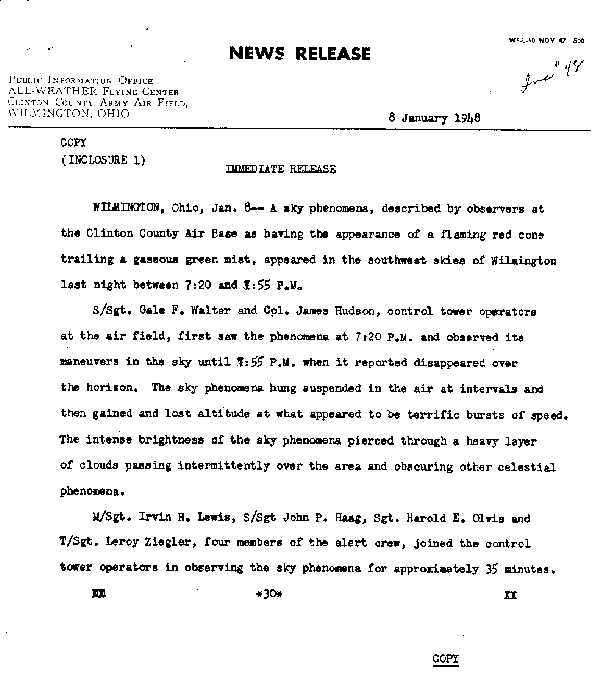
Another observer at Lockbourne Army Air Field in Ohio noted, “Just before leaving it came to very near the ground, staying down for about ten seconds, then climbed at a very fast rate back to its original altitude, 10,000 feet [3,000 m], leveling off and disappearing into the overcast heading 120 degrees. Its speed was greater than 500 mph [800 km/h] in level flight.”
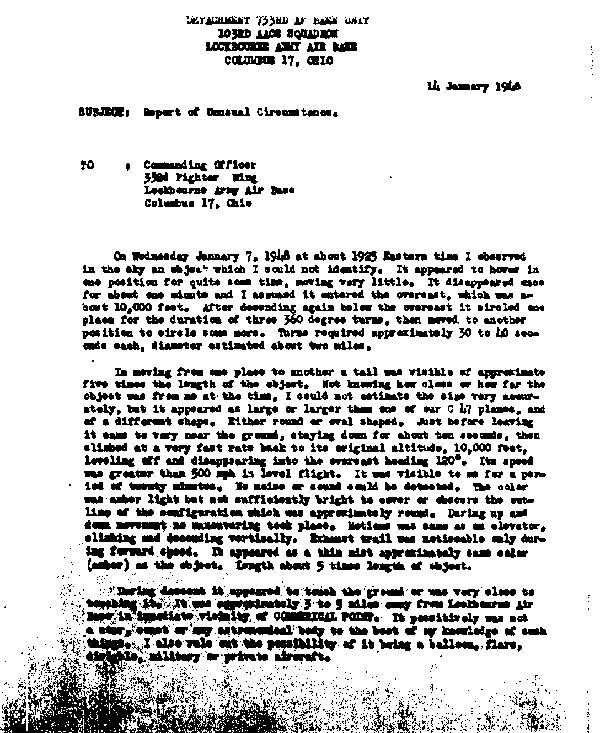
Four F-51D Mustangs of C Flight, 165th Fighter Squadron Kentucky Air National Guard—one piloted by Captain Thomas F. Mantell—were already in the air and told to approach the object. Blackwell was in radio communication with the pilots throughout the event. One pilot’s Mustang was low on fuel and he quickly returned to base. The other two pilots accompanied Mantell in steep pursuit of the object. They later reported they saw an object but described it as so small and indistinct that they could not identify it. Mantell ignored suggestions that the pilots should level their altitude and try to more clearly see the object. Ruppelt notes that there was some disagreement amongst the air traffic controllers as to Mantell’s words as he communicated with the tower: some sources reported that Mantell had described an object “[which] looks metallic and of tremendous size,” but according to Ruppelt, others disputed whether or not Mantell actually said this.
Only one of Mantell’s wingmen, Lt. Albert Clements, had an oxygen mask, and his oxygen was in low supply. Clements and the third pilot, Lt. Hammond, called off their pursuit at 22,500 feet (6,900 m). However, Mantell continued to climb. According to the United States Air Force, once Mantell passed 25,000 feet (7,600 m) he blacked out from lack of oxygen and his plane began spiraling back towards the ground.
The chase
Calls came into Kentucky state police offices from concerned Kentuckians at several different locations throughout the morning and early afternoon; so many, in fact, that officers decided to alert the Fort Knox military police, who in turn notified personnel at Godman as the object slowly traveled south from Irvington to Owensboro before reaching Godman.
Some at Godman had already observed the object by 1:45 p.m. as it traveled over Fort Knox.
Two tower personnel, Tech Sgt. Quinton Blackwell and Pfc. Stanley Oliver, later described the mysterious object as something resembling an ice cream-filled cone or parachute — white and round on top with a conical shape underneath. Operations officer Capt. Gary Carter said the round white object was plainly visible in the afternoon sky.
At 2:45 p.m., Mantell radioed the tower that he had spotted the object at 14,000 feet. At 15,000 feet, he provided an update: “The object is directly ahead of me and above me now, moving at about half my speed.”
Thirty minutes later, Mantell offered an update: "It appears to be a metallic object or possible reflections of sun from a metallic object, and it is of tremendous size. I’m still climbing. The object is above and ahead of me moving at my speed or faster. I’m trying to close in for a better look."The crash
After a few more garbled transmissions, communications with Mantell ceased. By 5 p.m., debris from his airplane was discovered in Shelby County, southeast of Louisville. Investigators noted that his seatbelt had been shredded.
His watch had stopped at 3:18 p.m.
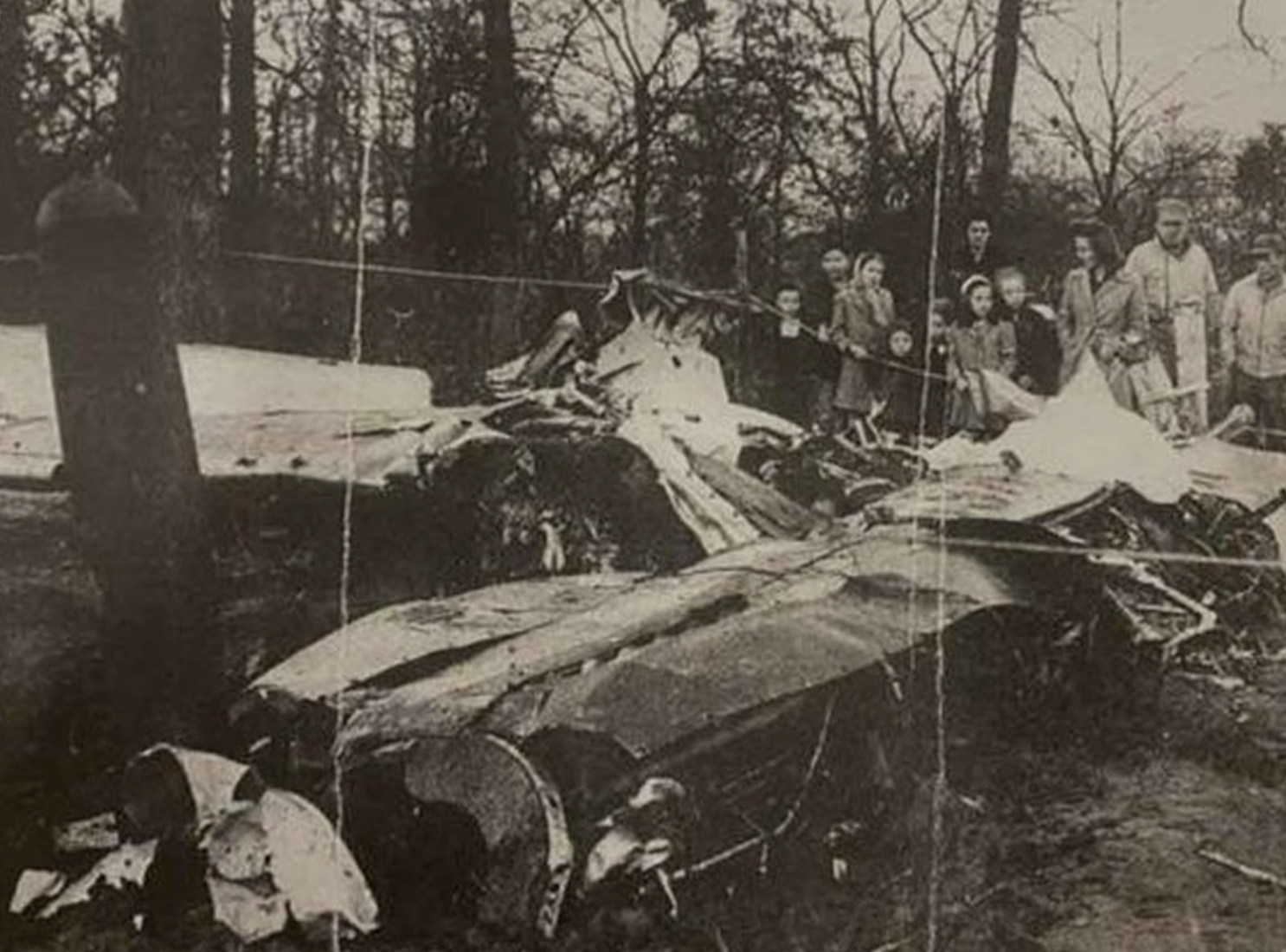
Newspaper reports
The Mantell incident was reported by newspapers around the nation, and received significant press attention.




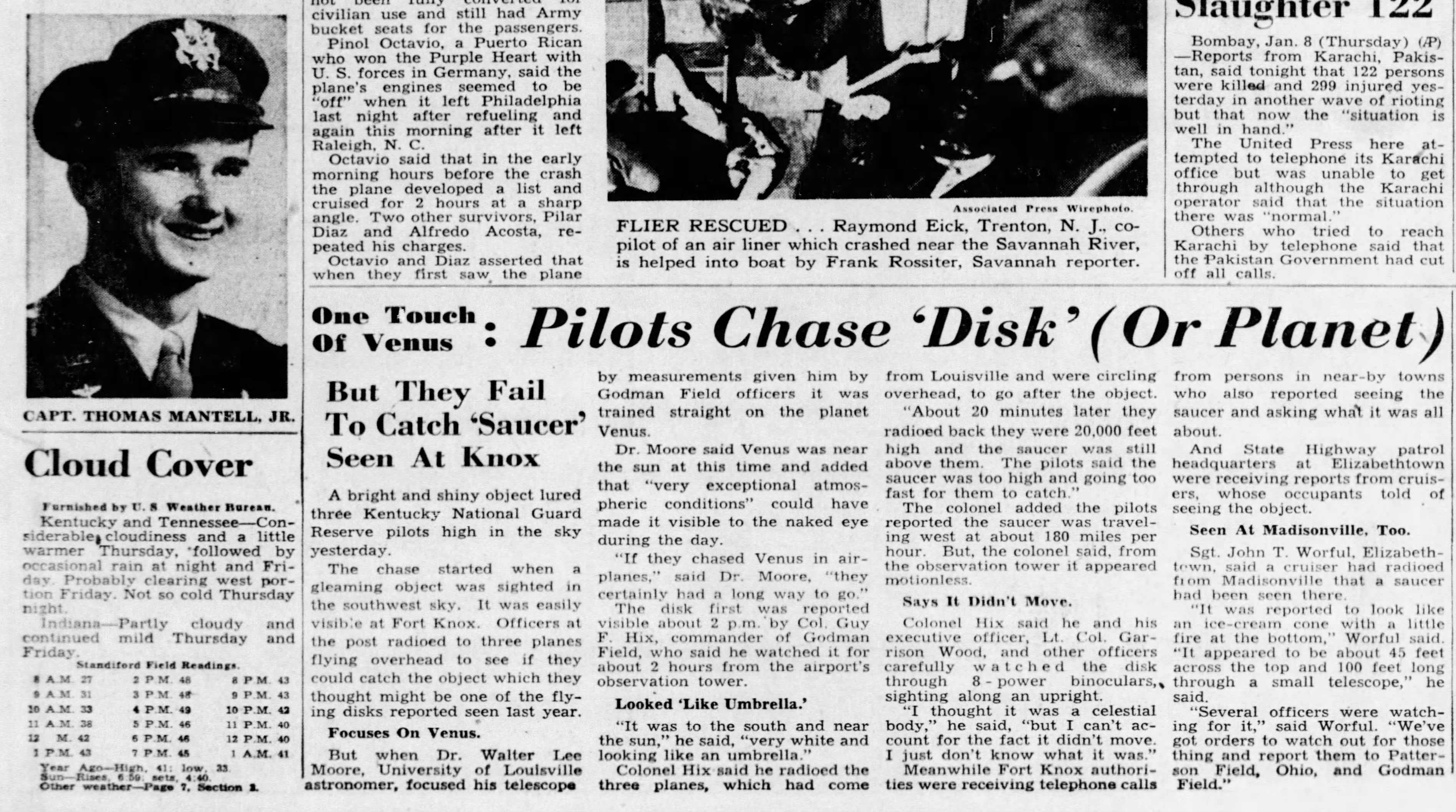
Historical marker
Placed at the site of Mantell’s crash in 2001, a historical plaque remains in Franklin just off I-65 — the same town of his birth — along with unanswered questions.
